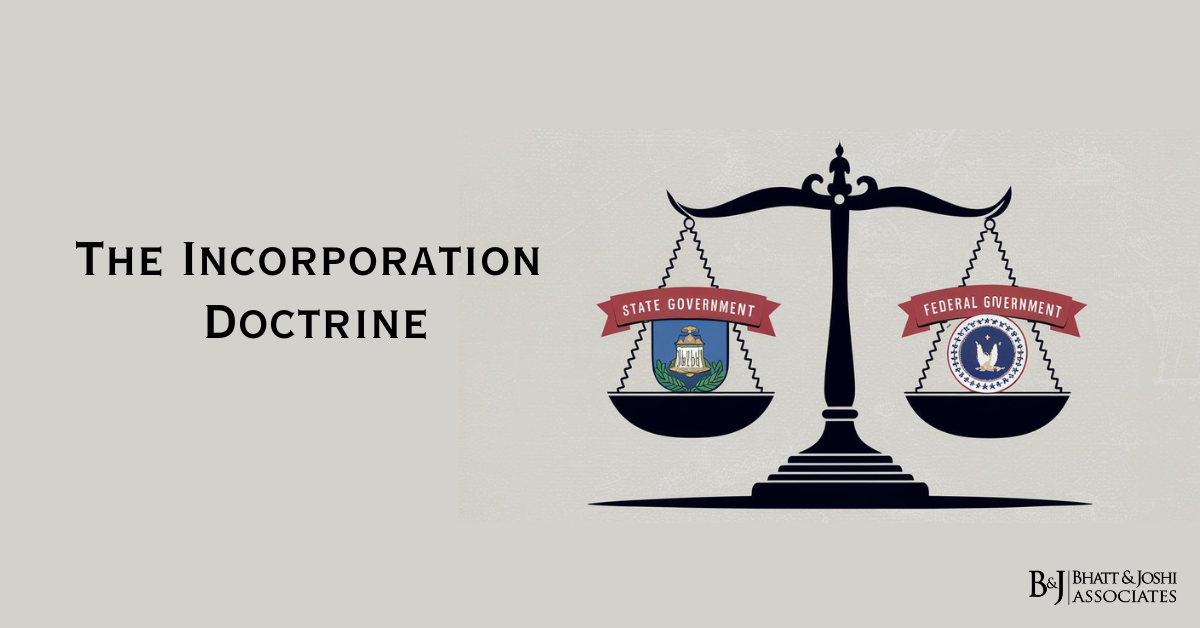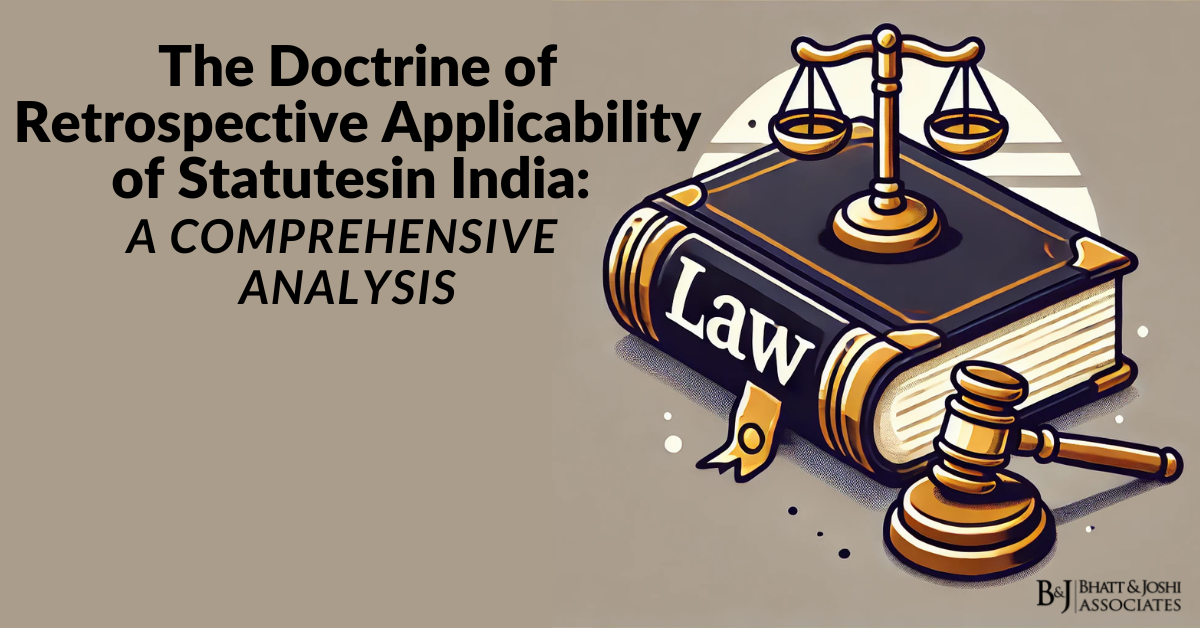Introduction
The Incorporation Doctrine is a fundamental principle in American constitutional law that has profoundly shaped the relationship between the federal government, state governments, and individual rights. This doctrine refers to the process by which the United States Supreme Court has applied the Bill of Rights, originally intended to constrain only the federal government, to state and local governments through the Due Process Clause of the Fourteenth Amendment. The Incorporation Doctrine has been instrumental in expanding civil liberties protections across the nation and has significantly altered the landscape of American jurisprudence.
At its core, the Incorporation Doctrine addresses a fundamental question in the American federal system: To what extent should the protections enumerated in the Bill of Rights apply to state actions? The answer to this question has evolved dramatically over time, reflecting changing interpretations of the Constitution and shifting societal values.
Historical Background
To understand the Incorporation Doctrine, it’s crucial to examine its historical context. When the Bill of Rights was ratified in 1791, it was widely understood to apply only to the federal government. This understanding was explicitly affirmed by the Supreme Court in Barron v. Baltimore (1833), where Chief Justice John Marshall held that the Fifth Amendment’s requirement of just compensation for government takings of property did not apply to states.
The landscape began to change dramatically with the ratification of the Fourteenth Amendment in 1868, in the aftermath of the Civil War. The Fourteenth Amendment’s Due Process Clause states that no state shall “deprive any person of life, liberty, or property, without due process of law.” This clause provided the textual basis for the eventual development of the Incorporation Doctrine.
However, the process of incorporation was not immediate or straightforward. In the decades following the ratification of the Fourteenth Amendment, the Supreme Court grappled with how to interpret its provisions. The Court initially rejected the idea of total incorporation – the notion that the Fourteenth Amendment automatically made the entire Bill of Rights applicable to the states.
The Debate: Total vs. Selective Incorporation
The debate over how to apply the Bill of Rights to the states through the Fourteenth Amendment centered around two main approaches: total incorporation and selective incorporation.
Total Incorporation: This approach, advocated most famously by Justice Hugo Black, argued that the Fourteenth Amendment was intended to apply the entire Bill of Rights to the states. Proponents of this view pointed to the historical context of the Amendment’s ratification, arguing that its framers intended to provide broad protections for individual rights against state infringement.
Selective Incorporation: This approach, which ultimately prevailed, holds that the Due Process Clause of the Fourteenth Amendment incorporates specific protections found in the Bill of Rights, rather than the Bill of Rights as a whole. Under this doctrine, the Court determines on a case-by-case basis which rights are fundamental to the American system of justice and therefore should be applied to the states.
The Process of Incorporation
The process of selective incorporation began in earnest in the early 20th century and continued throughout much of the century. Some key milestones in this process include:
- Gitlow v. New York (1925): This case marked the first time the Supreme Court explicitly held that the First Amendment’s protection of freedom of speech applied to state governments through the Fourteenth Amendment.
- Near v. Minnesota (1931): The Court incorporated the First Amendment’s freedom of the press.
- De Jonge v. Oregon (1937): The Court incorporated the First Amendment’s right to peaceable assembly.
- Cantwell v. Connecticut (1940): This case incorporated the First Amendment’s free exercise of religion clause.
- Everson v. Board of Education (1947): The Court incorporated the Establishment Clause of the First Amendment.
- Wolf v. Colorado (1949): The Court incorporated the Fourth Amendment’s protection against unreasonable searches and seizures, though it did not yet apply the exclusionary rule to the states.
- Mapp v. Ohio (1961): This landmark case extended the exclusionary rule to state courts, requiring that evidence obtained in violation of the Fourth Amendment be excluded from state criminal trials.
- Gideon v. Wainwright (1963): The Court incorporated the Sixth Amendment’s right to counsel in criminal proceedings.
- Malloy v. Hogan (1964): This case incorporated the Fifth Amendment’s protection against self-incrimination.
- Pointer v. Texas (1965): The Court incorporated the Sixth Amendment’s Confrontation Clause.
- Klopfer v. North Carolina (1967): The Court incorporated the Sixth Amendment’s right to a speedy trial.
- Duncan v. Louisiana (1968): This case incorporated the Sixth Amendment’s right to a jury trial in criminal cases.
- Benton v. Maryland (1969): The Court incorporated the Fifth Amendment’s protection against double jeopardy.
- Rabe v. Washington (1972): The Court incorporated the Sixth Amendment’s right to be informed of the nature and cause of the accusation.
- Schilb v. Kuebel (1971): The Court incorporated the Eighth Amendment’s prohibition on excessive bail.
- McDonald v. Chicago (2010): In a landmark decision, the Court incorporated the Second Amendment’s right to keep and bear arms.
- Timbs v. Indiana (2019): The Court incorporated the Eighth Amendment’s Excessive Fines Clause, one of the most recent incorporations.
Impact and Significance
The Incorporation Doctrine has had a profound impact on American law and society. By applying most of the protections in the Bill of Rights to state and local governments, it has dramatically expanded the scope of individual rights and liberties across the nation. Some of the key impacts include:
- Nationalization of Civil Liberties: The doctrine has led to a more uniform application of civil liberties protections across the country, ensuring that citizens enjoy the same basic rights regardless of which state they reside in.
- Expansion of Federal Judicial Power: Incorporation has significantly increased the role of federal courts in overseeing state criminal justice systems and other areas of state law that implicate constitutional rights.
- Transformation of Criminal Procedure: The incorporation of criminal procedure protections, such as the right to counsel and the exclusionary rule, has revolutionized state criminal justice systems.
- Enhancement of First Amendment Protections: By incorporating First Amendment protections, the doctrine has strengthened freedom of speech, press, religion, and assembly at the state level.
- Redefinition of Federalism: The doctrine has altered the balance of power between state and federal governments, limiting state autonomy in areas related to individual rights.
Criticisms and Controversies
Despite its transformative impact, the Incorporation Doctrine has not been without its critics. Some of the main criticisms include:
- Lack of Textual Basis: Critics argue that the doctrine lacks a clear textual basis in the Constitution and represents an overreach of judicial power.
- Erosion of Federalism: Some contend that the doctrine has unduly restricted states’ ability to serve as laboratories of democracy and to tailor their laws to local conditions and values.
- Selective Nature: The selective approach to incorporation has been criticized for being arbitrary and lacking a consistent theoretical foundation.
- Expansion of Federal Power: Critics argue that the doctrine has led to an excessive expansion of federal power at the expense of state sovereignty.
- Interpretive Challenges: The doctrine has sometimes led to complex interpretive challenges, as courts must determine how rights originally conceived as limitations on federal power should apply in the context of state governance.
Unincorporated Rights
While most of the Bill of Rights has been incorporated, a few provisions remain unincorporated as of 2024:
- The Third Amendment’s prohibition on the quartering of soldiers in private homes during peacetime.
- The Fifth Amendment’s requirement of a grand jury indictment for capital and infamous crimes.
- The Seventh Amendment’s right to a jury trial in civil cases.
- The Eighth Amendment’s prohibition on excessive fines (partially incorporated; the Supreme Court has ruled that the Excessive Fines Clause applies to state actions but has not yet fully clarified its scope in this context).
Recent Developments and Future Directions
The process of incorporation continues to evolve, as evidenced by recent Supreme Court decisions. The 2010 case McDonald v. Chicago, which incorporated the Second Amendment right to keep and bear arms, and the 2019 case Timbs v. Indiana, which incorporated the Eighth Amendment’s Excessive Fines Clause, demonstrate that the doctrine remains relevant and dynamic.
Looking to the future, several areas may see further development:
- Refinement of Incorporated Rights: The Court may continue to clarify the scope and application of recently incorporated rights, such as the Second Amendment and the Excessive Fines Clause.
- Potential Incorporation of Remaining Provisions: While unlikely, the Court could potentially consider incorporating the few remaining unincorporated provisions of the Bill of Rights.
- Application to New Technologies: As technology evolves, courts may need to consider how incorporated rights apply in digital contexts, such as electronic surveillance and online speech.
- Interaction with State Constitutions: The interplay between incorporated federal rights and state constitutional protections may continue to be a area of legal development.
- Debates Over Methodology: Ongoing debates about constitutional interpretation may influence how courts approach questions of incorporation in the future.
Theoretical Underpinnings
The Incorporation Doctrine rests on several theoretical foundations that have evolved over time:
- Fundamental Rights: The doctrine is closely tied to the concept of fundamental rights – those rights deemed essential to ordered liberty and deeply rooted in the nation’s history and traditions.
- Due Process: The incorporation of rights through the Due Process Clause reflects an understanding of due process that goes beyond mere procedural fairness to encompass substantive protections.
- Equal Citizenship: The doctrine can be seen as promoting a concept of equal national citizenship, ensuring that all Americans enjoy a common set of basic rights regardless of state boundaries.
- Living Constitutionalism: The gradual process of incorporation aligns with theories of constitutional interpretation that view the Constitution as a living document that evolves with societal changes.
Comparative Perspective
The Incorporation Doctrine is a uniquely American legal concept, reflecting the country’s federal system and the particular history of its Constitution and amendments. However, the broader issue of how to balance national standards of rights protection with local autonomy is a challenge faced by many federal systems around the world.
In some countries with strong federal traditions, such as Germany and Canada, basic rights are explicitly guaranteed at the national level and apply to all levels of government. The U.S. system of gradual, judicially-driven incorporation stands in contrast to these more straightforward approaches.
Conclusion
The Incorporation Doctrine represents one of the most significant developments in American constitutional law over the past century. By extending the protections of the Bill of Rights to state and local governments, it has fundamentally reshaped the relationship between citizens and government at all levels.
The doctrine’s evolution reflects broader changes in American society and legal thought, from the aftermath of the Civil War to the civil rights movement and beyond. It embodies the ongoing struggle to define and protect individual liberties within the framework of American federalism.
As the United States continues to grapple with new challenges to civil liberties and the proper balance between state and federal power, the Incorporation Doctrine will undoubtedly remain a crucial and dynamic area of constitutional law. Its future development will continue to shape the contours of American democracy and the protection of individual rights in the face of evolving social, technological, and political landscapes.
The legacy of the Incorporation Doctrine serves as a powerful reminder of the living nature of the Constitution and the ongoing process of interpreting and applying its principles to ensure justice and liberty for all Americans. As society evolves and new challenges emerge, this doctrine will likely continue to play a vital role in shaping the constitutional landscape of the United States.














